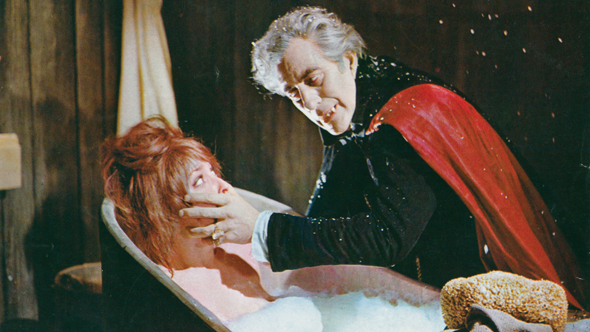love4livi.com – “The Fearless Vampire Killers,” also known as “Dance of the Vampires,” is a unique blend of horror and comedy directed by the acclaimed filmmaker Roman Polanski. Released in 1967, this film stands out for its distinct style and its attempt to merge two seemingly disparate genres into a cohesive narrative.
Plot Overview
Set in the ominous landscapes of Transylvania, the story follows Professor Abronsius, portrayed by Jack MacGowran, and his awkward but endearing apprentice, Alfred, played by Roman Polanski himself. Their mission is to hunt down vampires, leading them to a snow-covered village where they encounter Count von Krolock and his eerie castle. The narrative takes a comedic turn as Alfred falls for the innkeeper’s daughter, Sarah, whose abduction by the vampire count sets the stage for a series of humorous and thrilling escapades.
Cinematic Style and Themes
Polanski’s film is celebrated for its lush cinematography and artful set designs, which vividly bring the gothic atmosphere to life. The use of color and light in the film is particularly noteworthy, creating a rich visual experience that complements its comedic elements. The film’s humor is derived from its satirical take on traditional vampire lore, poking fun at the conventions of the genre while maintaining a sense of suspense.
Reception and Legacy
Upon its release, “The Fearless Vampire Killers” received mixed reviews, with some critics appreciating its inventive approach and others finding its humor uneven. Despite this, the film has gained a cult following over the years, appreciated for its unique style and Polanski’s deft direction. It’s often regarded as a precursor to more contemporary horror comedies that blend scares with laughter.
Conclusion
“The Fearless Vampire Killers” remains a fascinating entry in Roman Polanski’s filmography. Its combination of horror and comedy, along with its striking visual style, makes it a significant film for those interested in genre-bending cinema. Its legacy continues as a testament to Polanski’s willingness to experiment and push the boundaries of traditional storytelling.
